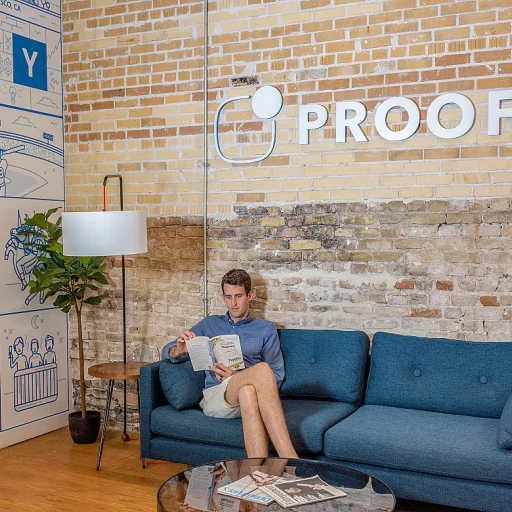
Defining the Role of a Member at Large
Exploring the Unique Position of a Member at Large
In the evolving landscape of corporate governance in the UK, understanding the specific roles within an organization’s board is essential. The role of a member at large often prompts questions regarding its necessity and function. A member at large is a versatile position, typically found within large boards or associations, including homeowners' associations (HOAs), where members are elected to represent the broader interest of the organization without the restriction of departmental responsibilities.
This role serves as an integral part of board governance, providing a balanced perspective that aids in decision-making processes. These members may not have specific operational duties, but they hold critical voting rights and partake in pivotal board meetings, ensuring that diverse voices are heard during discussions on board management and strategic agendas. The inclusion of a member at large is particularly beneficial in facilitating well-rounded decisions during the annual conference and other significant events.
Board members in this capacity can also take on special projects, offering flexibility and fresh insights into the board's roles and responsibilities. This adaptability helps address gaps that might otherwise impede organizational progress. By maintaining a connection to the wider member base, they ensure that the board reflects the interests and concerns of the collective, enhancing the board's overall effectiveness.
The importance of a member at large is underscored by their presence in large boards, where complexity and the need for a comprehensive approach to board governance are higher. Understanding this role is crucial for effective board operation, addressing both the challenges and opportunities it presents to ensure alignment with the organization's strategic goals. For more insights into effective business strategies and roles within UK companies, explore our article on analyzing the lifecoach business in the UK.
Key Responsibilities and Duties
Core Duties and Responsibilities
The role of a Member at Large in UK companies is multifaceted, involving a variety of responsibilities that contribute to effective board governance. These members play a crucial part in ensuring that the organization operates smoothly and in alignment with its strategic goals. Here are some of the key duties:
- Board Participation: Members at Large are expected to actively participate in board meetings and discussions. Their input is vital in shaping decisions that affect the entire organization.
- Voting Rights: As part of their role, they hold voting rights on various issues, influencing the direction of the company. This includes decisions on special projects and other strategic initiatives.
- Representation: They serve as representatives of the broader membership, voicing concerns and suggestions from other members during board meetings.
- Committee Involvement: Often, Members at Large are involved in specific committees, contributing to board management and governance tasks.
- Annual Conference Participation: They may be required to attend the annual conference and other key events, ensuring they stay informed about the latest developments within the organization.
These responsibilities require a strong understanding of the organization's governing documents and the ability to work collaboratively with other board members. For more insights into how these roles contribute to leadership development, you can explore our article on understanding the development of leadership teams.
Skills and Qualifications Required
Essential Skills and Qualifications for Members at Large
To effectively execute their responsibilities, members at large are expected to possess a comprehensive set of skills and qualifications. These traits are essential for navigating the complex landscape of board governance and contributing positively to the organization’s goals.
1. Strategic Vision: Members at large must have an overarching strategic vision that aligns with the board's objectives. They should be capable of understanding the organization’s long-term goals and integrating these into the annual and special projects they oversee.
2. Governance Expertise: Familiarity with governance structures and procedures is crucial. A strong grasp of board roles and governance is necessary for ensuring compliance with governing documents and facilitating effective board management.
3. Communication Skills: Since members interact with other board members and representatives regularly, they need excellent communication skills. This is vital for participating in board meetings, contributing to board meeting discussions, and liaising with stakeholders.
4. Decision-Making and Voting Abilities: Members at large often engage in key decision-making and voting processes. This requires the ability to analyze information critically and make informed decisions that reflect the best interests of the organization.
5. Management Software Proficiency: Proficiency in management software and board portal tools is becoming increasingly important. These digital platforms aid in organizing board meetings, managing board documents, and streamlining communication among board directors.
Given the dynamic nature of board roles, members must continuously enhance their abilities to adapt to evolving challenges. Effective strategies for scaling your business can aid in developing these essential competencies, helping members at large contribute significantly to the board’s success.
Challenges Faced by Members at Large
Addressing Challenges in Their Role
Members at large in UK companies often encounter specific challenges related to their position in the company hierarchy. Balancing the interests of various board members and stakeholders is a central issue. Since they do not represent a specific subgroup within the organization, these members must ensure their contributions and votes reflect the broad spectrum of organizational interests. Being part of a large board can sometimes make it difficult to engage effectively with all members during board meetings. Coordination in such meetings requires a strong understanding of governance roles and responsibilities to facilitate meaningful dialogue and decision-making. Moreover, members need to navigate complex governing documents and ensure they understand the intricacies of board governance, including the legal and organizational policies at play. The role also demands active participation in special projects and committees. Members may need to attend the annual conference and other formal events, which adds to their responsibility of being well-versed with the organization's evolving strategic plans. Members at large often find themselves in a continuous learning process, where adapting to new technological tools, like management software and board portals, becomes essential. These tools streamline communication and enhance efficiency but require a willingness to learn and integrate them into daily operations. Lastly, the challenge of building consensus among diverse board roles and voting rights adds another layer of complexity. Members must be adept at negotiating and fostering cooperation to ensure decisions align with the company's long-term vision and goals. This requires not only strategic foresight but also the ability to harmonize differing viewpoints within the board. Despite these challenges, members at large play a crucial part in the organization's success by bringing a unique perspective that balances the needs of the organization with governance duty.Impact on Company Success
The Influence of a Member at Large on Organizational Success
Members at Large play a pivotal role in the overall success of a company. Their unique position within the board allows them to influence key decisions that directly impact the organization's trajectory. As part of the board, they often contribute to important discussions during board meetings, ensuring that the governance aligns with the organization’s vision and strategy.
By participating in voting processes, Members at Large have the opportunity to shape policies and strategies. This is crucial, as their insight and impartial perspective can bring balance to decisions that may otherwise be swayed by dominant board members. Their role can often be one of oversight, ensuring that the governing documents and protocols are adhered to and that board meetings maintain transparency and accountability.
On an operational level, the involvement in specific special projects can bring a fresh perspective to ongoing initiatives. At annual conferences, these members may represent the interests of various stakeholders, providing feedback and highlighting areas for improvement. Furthermore, their engagement with management software and board portal tools ensures that communication and data management are streamlined within board activities.
The success of this role is greatly dependent on the member's ability to build relationships with other board directors. Through attending board functions and working collaboratively, Members at Large can drive collective success by fostering a cooperative environment. Ultimately, their role significantly contributes to the company’s ability to navigate challenges and capitalize on new opportunities, ultimately fortifying the board and the organization as a whole.













